Contract Planning 101: Building A Strong Foundation
Content
- What is Contract Planning?
- Why does Contract Planning matter so much?
- What are the Key Steps in Contract Planning?
- Identify Needs and Requirements
- Assessing Contractual Risks
- Budgeting and Cost Estimation
- Drafting the Contract
- How does Dock 365 CMS improve Contract Planning?
- Create Simple Templates
- Standardize Approval Workflows
- Centralize All Contracts
- Smart Integrations
- Conclusion
Businesses developing products or services engage in all kinds of contracts. It’s how they protect their interests and formalize relationships with clients, suppliers, and employees. However, all the paperwork, tasks, and deadlines can hinder business growth when not done right, especially when they have limited resources and expertise.
In such cases, affordable tools and the right strategy can help new businesses navigate the legal landscape. In this blog post, we’ll explore contract planning, its challenges, benefits, and best practices to help businesses thrive.
What is Contract Planning?
Contract planning is strategically preparing and organizing all aspects of a contract before it is formally executed. It involves defining the scope of work, identifying objectives, assessing risks, estimating costs, and determining timelines and resource requirements. Contract planning is a critical phase in procurement and project management, ensuring that all parties clearly understand their roles, responsibilities, and expectations.
Effective contract planning begins with understanding the needs of the project or service and translating those needs into clear and measurable requirements. This includes selecting the appropriate type of contract, developing evaluation criteria for selecting vendors or contractors, and outlining performance standards. It also addresses legal and regulatory compliance, ensuring the contract aligns with organizational policies and industry standards.
Why does Contract Planning matter so much?
Legal agreements are the foundational blocks of all these day-to-day operations. They enable new businesses to set terms for all their deals and reap benefits with fewer risks. Determining rights, responsibilities, payments, timelines, and dispute resolutions can help align expectations. As they grow, businesses must scale their contract management process to avoid violations, litigations, and failed commercial relationships. Proactive contract planning enables legal, financial, sales, and procurement teams to make the most out of contractual relationships.
Risk Mitigation
Contract planning helps identify and mitigate potential risks before they impact a project. By outlining roles, responsibilities, and expectations in detail, planners can anticipate legal, financial, and operational risks. This preparation allows for the development of contingency plans and risk-sharing mechanisms within the contract itself.
Without proper planning, unexpected issues, such as delays, cost overruns, or scope creep, can lead to disputes or even project failure. Contract planning also ensures that risk allocation is fair and balanced between parties, which can reduce litigation and improve relationships. By addressing risks upfront, organizations can protect their interests, maintain control over outcomes, and ensure smoother execution.
Cost Control
Well-structured contract planning enables accurate cost estimation and budget forecasting. It ensures that all aspects of the work, such as labor, materials, and timelines, are clearly defined, reducing the likelihood of hidden costs or price escalations. Planning also helps in choosing the right contract type (e.g., fixed-price, cost-reimbursable), which directly influences how costs are managed. It provides an opportunity to negotiate favorable terms and prevent unnecessary expenditures. By aligning scope, resources, and payment milestones, organizations can track financial performance more effectively and avoid overpayments. Ultimately, good planning leads to better financial discipline and optimized use of resources.
Legal and Regulatory Compliance
Contract planning ensures that the contract aligns with applicable laws, regulations, and organizational policies. This is particularly critical in sectors like government, healthcare, and construction, where compliance requirements are strict. During planning, legal experts can review terms and clauses to ensure they meet regulatory standards and protect the organization from liability. Failing to comply can result in penalties, contract termination, or reputational damage. A well-planned contract includes necessary legal safeguards, dispute resolution mechanisms, and adherence to ethical standards. It provides a solid legal foundation that stands up to scrutiny and protects all parties involved.
Performance Clarity and Accountability
Effective contract planning clearly defines deliverables, timelines, quality standards, and performance metrics. This clarity ensures that all parties know exactly what is expected, reducing misunderstandings and enhancing accountability. When performance expectations are documented and agreed upon in advance, it becomes easier to monitor progress and evaluate contractor performance objectively. Regular reporting and performance reviews can be built into the contract from the start, promoting transparency and ongoing improvement. Accountability is further reinforced through penalties for non-compliance and incentives for exceeding expectations. In turn, this improves project outcomes and strengthens professional relationships.
What are the Key Steps in Contract Planning?
Contract planning enables businesses to effectively prepare and draft agreements for all kinds of purposes. This includes outlining the terms, conditions, roles, and responsibilities of each party. Effective contract planning ensures that all stakeholders are on the same page and helps mitigate risks associated with misunderstandings and disputes. Properly drafted contracts provide legal protection in the event of a disagreement, enabling parties to enforce their rights and obligations. It fosters trust and cooperation among parties, leading to better collaboration and successful project outcomes.
1. Identify Needs and Requirements
The first step in contract planning is identifying the specific needs of the organization or project. This involves understanding what goods, services, or works are required and why. Engaging stakeholders early is critical to ensure that all needs are clearly captured. Once the needs are identified, they must be translated into detailed and measurable requirements. These include technical specifications, performance criteria, quality standards, and any regulatory or legal requirements.
Clear requirements reduce ambiguity, support better supplier responses, and lay the foundation for an effective contract. The contract may not deliver the expected value or outcomes without this clarity. This stage may also include market analysis to determine availability and capability within the supplier market, helping to refine scope and approach. Ultimately, this step ensures that the procurement strategy aligns with organizational goals, budget constraints, and timeframes.
2. Assessing Contractual Risks
A thorough risk assessment is essential in contract planning to identify potential obstacles that could affect cost, schedule, or performance. Risks may include financial instability, supply chain disruptions, legal non-compliance, labor issues, or technical challenges. Once identified, each risk should be analyzed in terms of its likelihood and potential impact. This allows the planning team to develop risk mitigation strategies, such as contingency plans, alternative suppliers, insurance, or performance bonds.
Additionally, risks can be allocated between parties through contract clauses, ensuring responsibilities are clearly defined. Planning for risk protects the organization and fosters a more resilient contract. Effective risk management helps maintain project continuity, avoids costly delays, and reduces the likelihood of disputes. Documenting and revisiting risks throughout the project lifecycle ensures they are continuously managed and updated. This proactive approach builds confidence in the contract’s ability to achieve its objectives under varying conditions.
3. Budgeting and Cost Estimation
Budgeting and cost estimation involve forecasting the financial resources required to fulfill the contract. This step begins with developing a detailed cost breakdown for all project components, including materials, labor, equipment, overheads, and contingencies. Cost estimation should be realistic, based on market research, historical data, or supplier consultations. A clear understanding of the cost structure helps in selecting the most appropriate pricing model—fixed-price, time and materials, or cost-reimbursable. Additionally, planners must consider funding sources, approval processes, and cost control mechanisms.
The goal is to ensure that the budget supports the project’s scope without exceeding financial limits. Effective budgeting also aids in contract negotiations, ensuring that prices are fair and transparent. Including cost milestones and payment schedules in the contract helps monitor progress and manage cash flow throughout the project. Poor budgeting can lead to overruns, funding gaps, or compromised quality. Therefore, this step is crucial for financial sustainability and project success.
4. Drafting the Contract
Once the requirements, risks, and budget are established, the next step is to draft the contract. This includes defining the contract structure, scope of work, deliverables, timelines, pricing, performance standards, and legal terms. Selecting the appropriate contract type is critical—it could be fixed-price, cost-plus, unit rate, or framework agreements, depending on project complexity and risk tolerance. The contract should also include dispute resolution procedures, termination clauses, confidentiality agreements, and penalties for non-performance.
Collaboration with legal and procurement teams is vital to ensure the contract meets all legal requirements and organizational standards. The draft must be clear, concise, and comprehensive to avoid ambiguity. Once drafted, the contract is shared with potential vendors or suppliers for review. A well-drafted contract provides a shared understanding, reduces the risk of conflict, and supports smooth execution. It also serves as a reference point throughout the project, guiding performance, accountability, and change management.
How does Dock 365 CMS improve Contract Planning?
Result-driven contract management planning is the baseline for businesses to take control over their contract portfolio. The speed of modern businesses demands more from legal than ever before. A contract management software solution can help your legal team work more accurately and efficiently while mitigating risk and ensuring compliance over all of the company’s contracts.
Create Simple Templates
Contract management software allows users to self-service on contracts and design contracts from pre-approved contract templates. They can maintain an extensive clause library with provisions vital to protect their business interests. Managing various file formats is possible, where you can upload different file types like spreadsheets, images, Word documents, and more without the hassle.
Working tirelessly on a particular contract draft? You’ll be well taken care of with accurate version controls, meaning you won’t have to stress about working on the wrong version of a contract draft. Auto population of contract metadata adds a touch of ease and efficiency to contract authoring, where maintaining critical details like key deadlines, addresses, counterparty information, and more is kept secure and readily available to be populated into templates.

Standardize Approval Workflows
Drawn-out review and approval processes can hinder an organization's ability to close deals. The Dock 365 contract management system simplifies routine tasks with automated workflows. Users can specify the stages and stakeholders through which a contract passes during its lifecycle. These customizable workflows offer real-time status alerts and deadlines to ensure smooth contract progression.
A workflow moves from one stage to another automatically after approval from the relevant user associated with that stage. Businesses with an internal legal team can rapidly review contracts and expedite approvals within the contracting software. Because all draft versions and data are kept within one secure location, your team can review multiple document versions at once, comparing newer drafts to previous drafts to confirm that appropriate revisions have been made.
Centralize All Contracts
Centralizing contract management cuts down on risks and improves contract storage. The last thing legal wants to do is waste time parsing through several storage formats to locate a single agreement. No need to keep your contracts in shared drives, filing cabinets, email chains, or computer desktops. Instead, keep sensitive information within a single source of truth in a cloud-based centralized SharePoint repository. Disjointed contracting systems only result in increased risks, expenses, and maintenance costs.
An all-in-one, integrated contract lifecycle management software solution empowers legal with streamlined and secure management of contracts throughout the lifecycle, but most especially during approvals, authoring, reviews, and negotiations, where their legal expertise is leveraged the most. Contract management software can be integrated with business apps to optimize the digital contracting platform for all users, enhancing communication and collaboration on your contracts.

Smart Integrations
Vendor, legal, sales, finance, and marketing teams across the organization must collaborate to churn out contracts. They must share information, oversee tasks, and engage external parties throughout the contractual relationship. However, disjointed processes and data silos can obstruct real-time communication among stakeholders. Fortunately, advanced contract management solutions connect with relevant business systems effortlessly.
For instance, Dock 365 allows users to control the contracting process within everyday applications, such as Microsoft 365 SharePoint, Outlook, Teams, and Word. The CMS platform also integrates with popular ERP (Oracle NetSuite & Microsoft Business Central) and CRM (Salesforce & Dynamics CRM) systems to facilitate two-way data flow. Businesses can combine resources and efforts without switching between multiple platforms. It streamlines the entire contract lifecycle and ensures data integrity.
Conclusion
Contract management software allows companies to easily author, review, and finalize contracts, meaning faster and more efficient contract lifecycles overall. Legal teams can track contracts throughout the relationship with vendors, customers, employees, and partners. Legal is always looking to save time wherever possible, and with contract planning and Dock 365, they can do just that.
By integrating your contract management software with other leading business solutions and electronic signature integrations such as Microsoft Office 365, Teams, Adobe Sign, and DocuSign, businesses can unlock powerful contract management that takes pressure off legal’s back. Maintaining a high volume of complex contracts becomes far less daunting with the support of a contract management software solution that increases visibility and risk management. You’ll also find that turnaround times throughout the contract lifecycle are reduced substantially, leading to more accurate and compliant contracts being executed in less time.
Book a Live demo
Schedule a live demo of Dock 365's Contract Management Software instantly.
.png?width=196&height=196&name=MicrosoftTeams-image%20(24).png)
Written by Deepti Gopimohan





